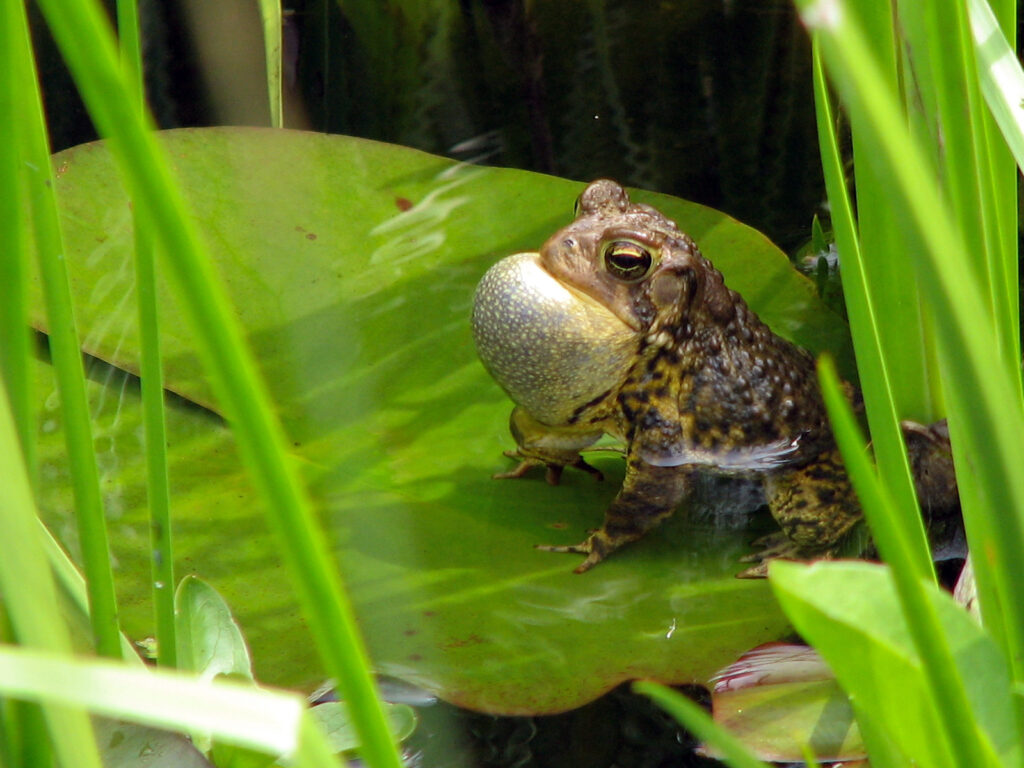
It’s hard to imagine that such a curmudgeonly-looking creature could produce such a beautiful song. And they freely share it night and day!
Hearing our first toad trilling in our pond, usually in April, is a sure sign of spring for us. Here’s when we heard them each year.
Since we’ve become habitat gardeners, we’ve noticed that we are attuned to such signs of the seasons, rather than just looking at the calendar.
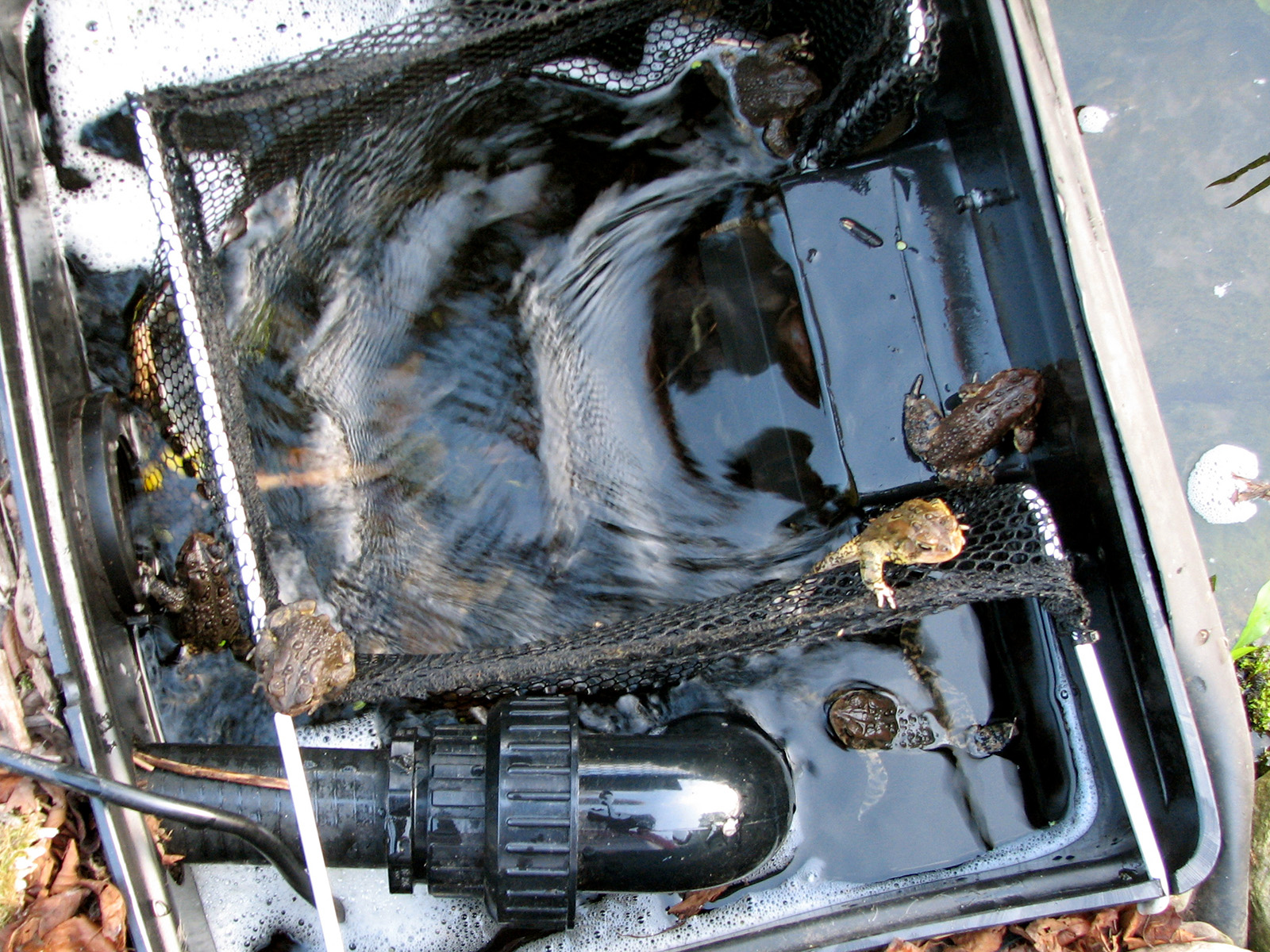
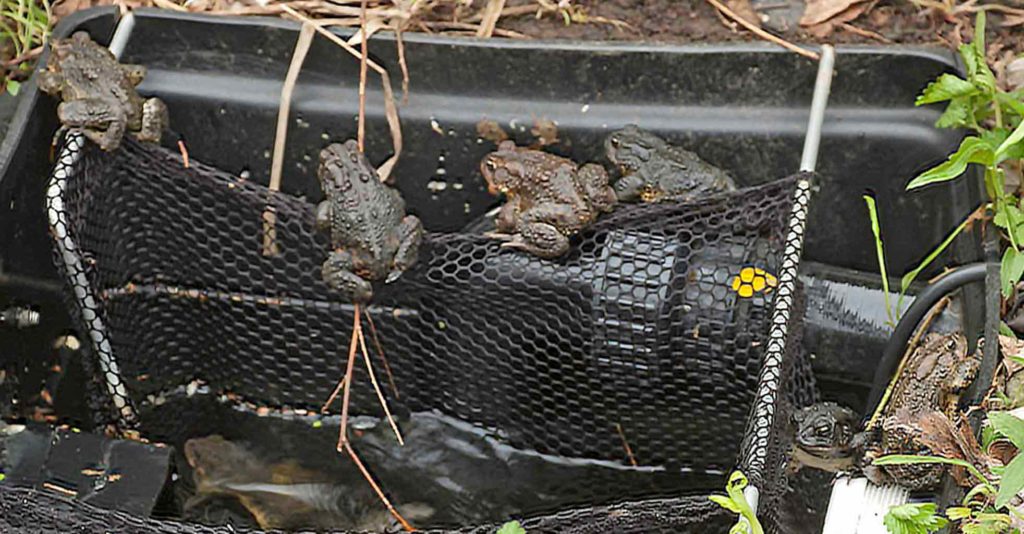
We’ve sometimes seen up to eight toads in our pond skimmer. They like the moist, dark environment especially when the weather is dry. (Usually the top of the skimmer is on). They stay there even when I clean out the pond debris.
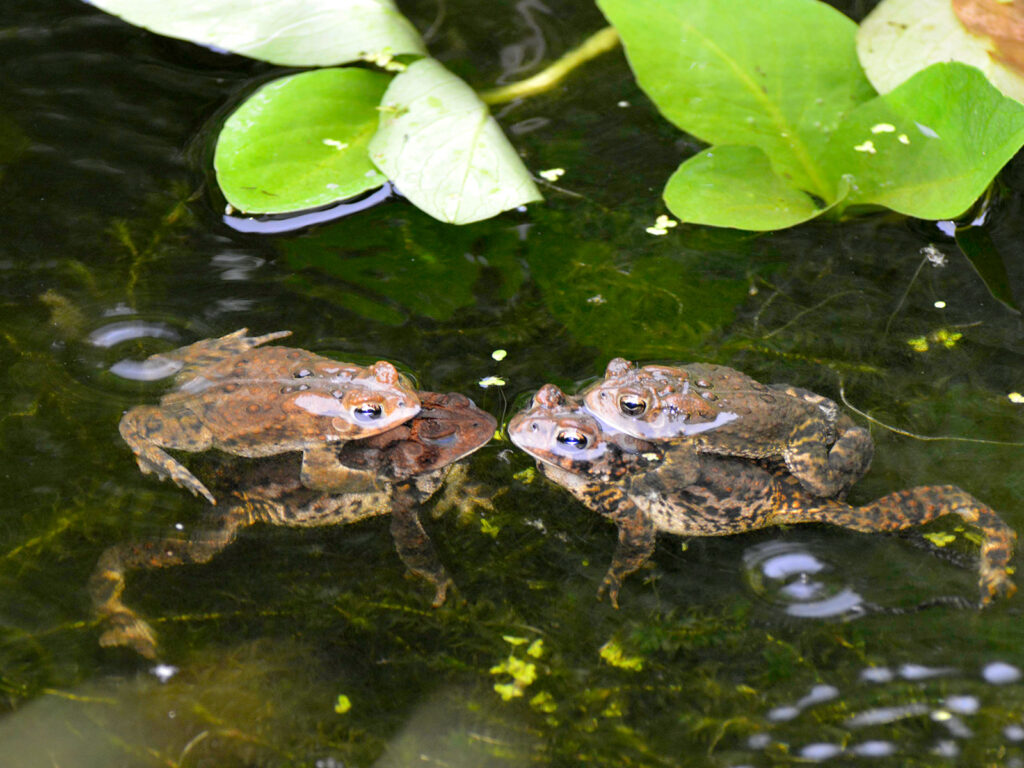
If I find pairs mating in the skimmer, I scoop them out, though, and put them in the other pond. I think the eggs would just get pulled into the pump and wasted otherwise.
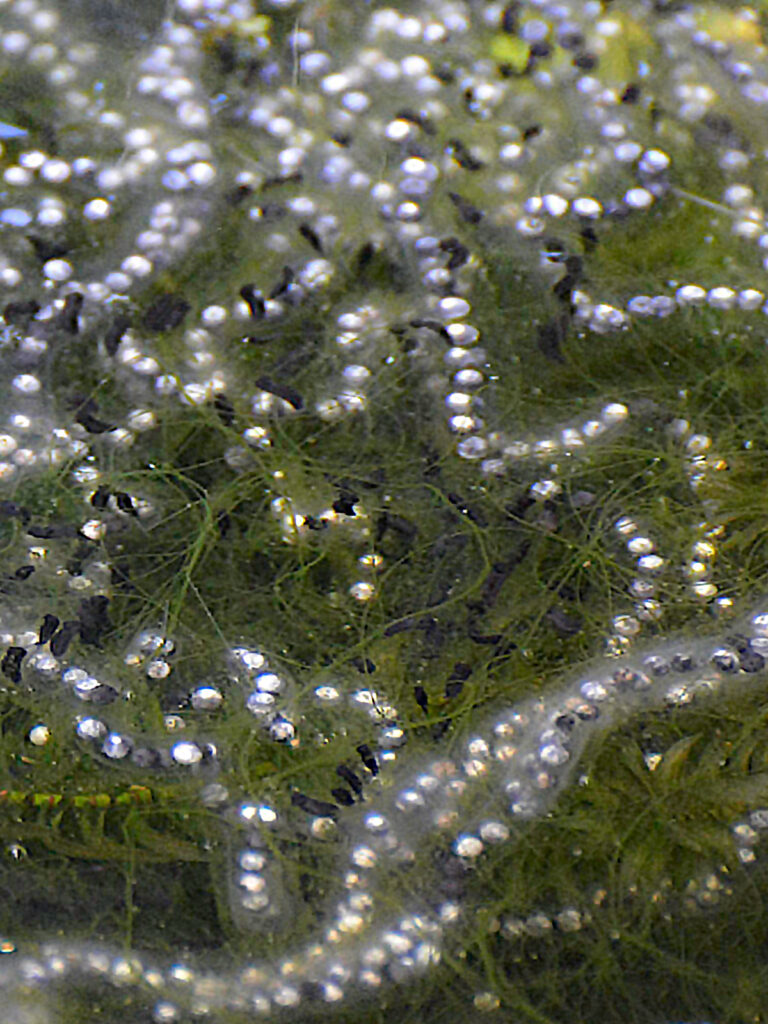
They lay thousands of eggs. Note that there is an up-side and a down-side to the eggs. This string of eggs seems to have been turned over for some reason.
Any predator looking from the bottom of the pond upward will see the white side, thereby making the eggs less visible.
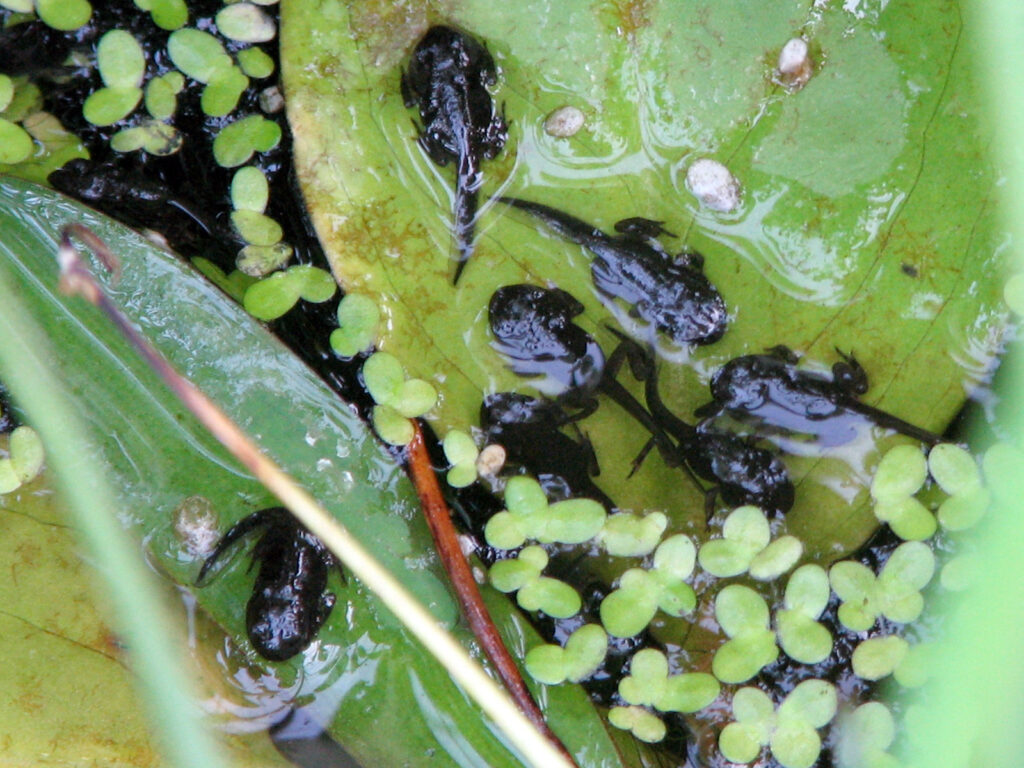
We love to watch the tiny tadpoles transform into little toads. At this stage in the picture, they have developed their little “zig-zaggy” legs, but they still have their tails.
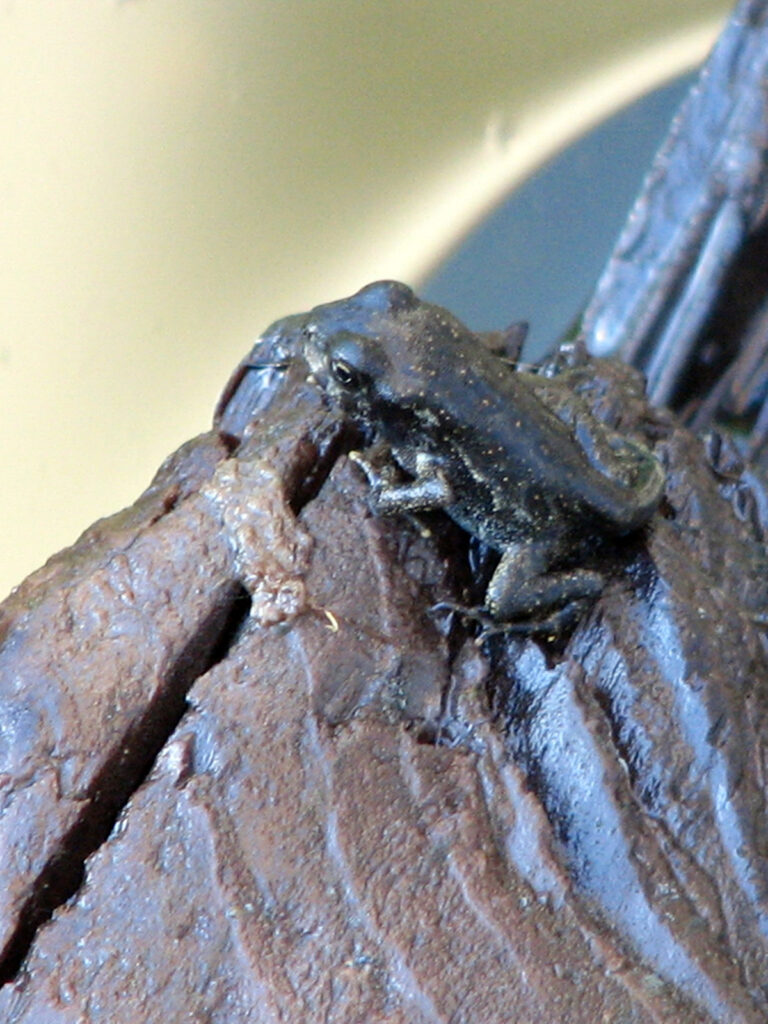
When their tails begin to disappear, they’re becoming land animals. In fact, if they’re left in water with no opportunity to leave, they can actually drown! This one has climbed up on a piece of driftwood and is ready to move on.
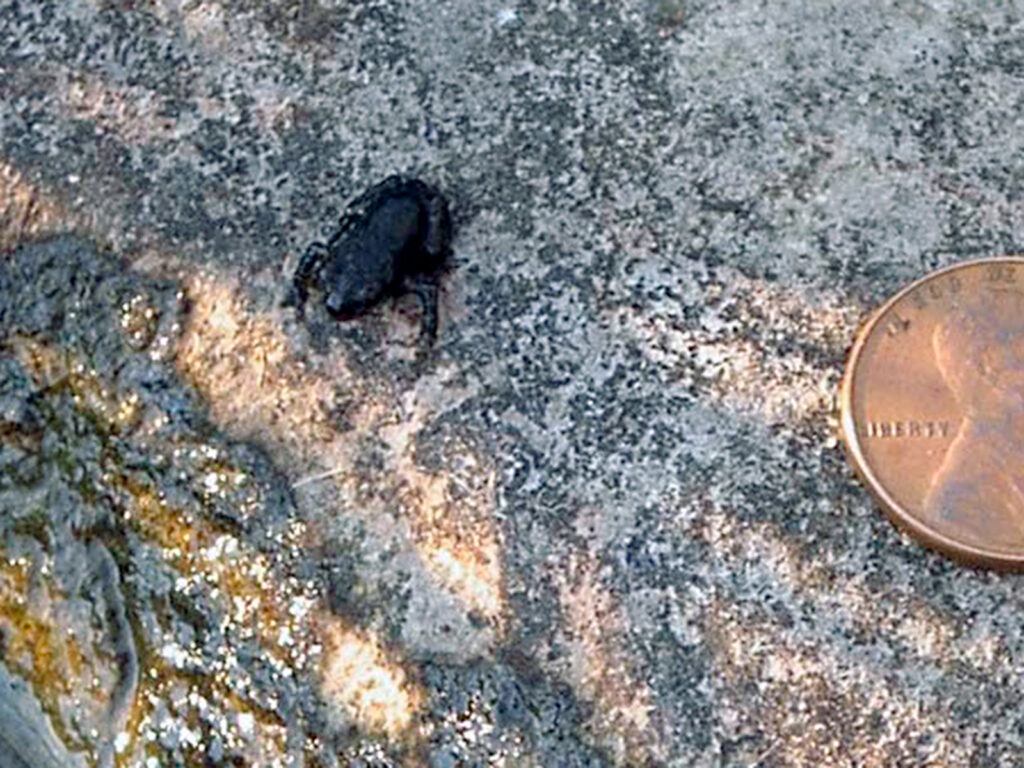
Here’s one of (what we call) our “micro-toads.” There are generally significantly fewer than the thousands of eggs and tadpoles we usually start with. Oddly, the toadlets are smaller than they were when they were tadpoles.
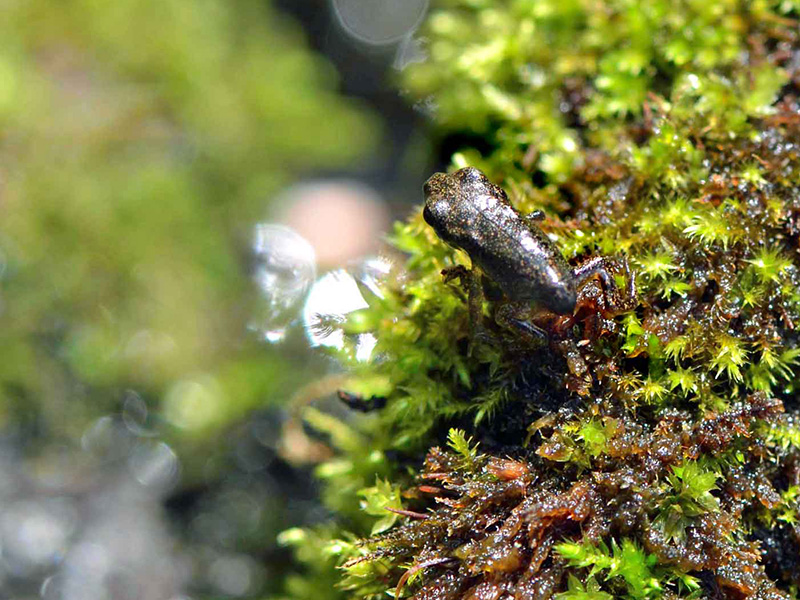
Over the past few years, toads have laid tens of thousands of eggs in our ponds. By the time they’re ready to leave our ponds, there are somewhat fewer, and I imagine that after a few weeks out of the ponds, their numbers are considerably diminished.
By the way, I was surprised to learn that toads shed their skins every few weeks while growing, and older toads do this four times a year! It peels off and they eat it! Nature doesn’t waste much …
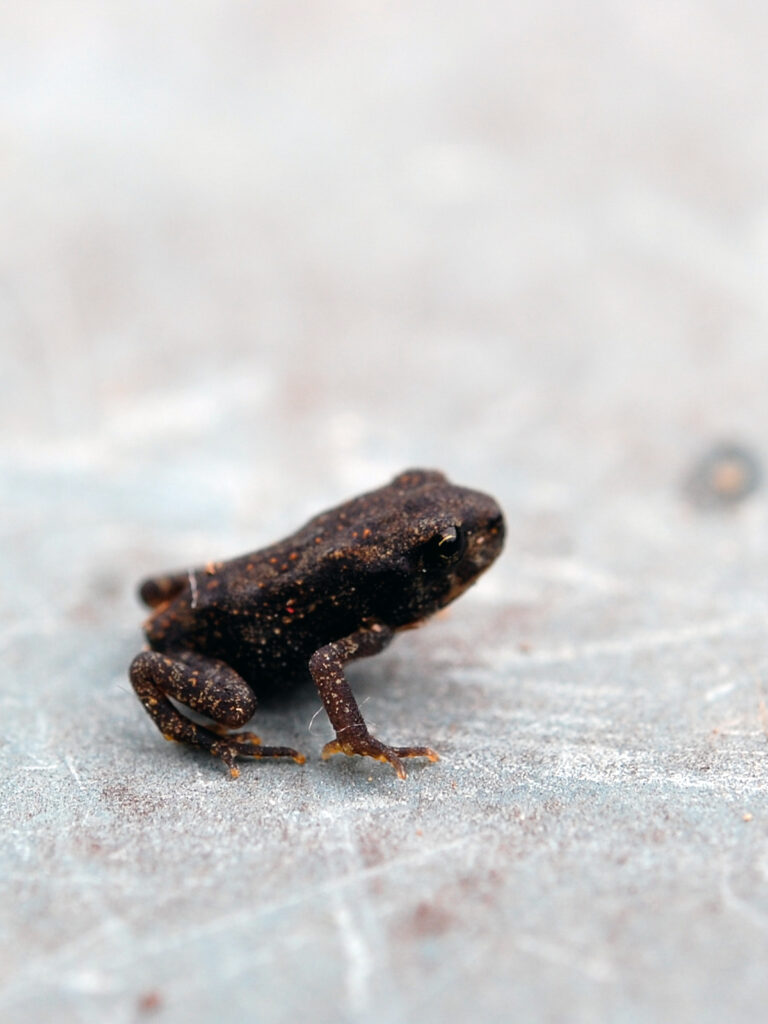
On days when many are leaving the pond, I’ve seen birds with little toadlet legs sticking out of their beaks. But after all, how many toads could our yard support anyway? Natural attrition is built into the system. It’s sad, but that’s part of nature.
Still, toads are so beneficial — eating slugs and other pests — that we hope a good many survive. It’s hard to know how many do survive since mating season in the ponds is the only time we see toads routinely. (Green frogs, on the other hand, hang around the pond all the time — one reason we really miss them.)
It’s always fun to discover some of our own toadlets in the garden. Sometimes I find them hiding under stones or among dense stands of plants.
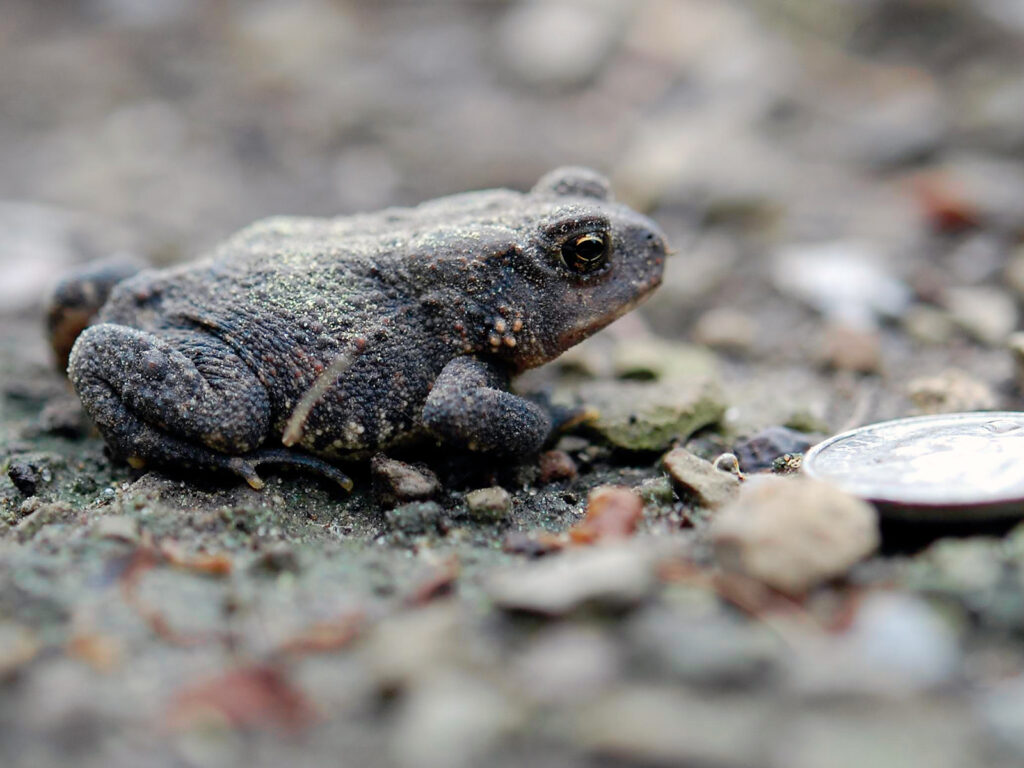
We don’t yet know how to determine if they’re one-year-old or two-year-old toads. (I put a dime at the right of the photo to show his relative size.) I’ve also read that their reproductive development can be delayed in areas with a high population of toads.
Except for mating season, we don’t often see these nocturnal animals, but we suspect we must have a large population. Our ponds produce so many tadpoles, and our yard is very toad-friendly. Why wouldn’t they stick around?
Resources
- Penn State University:
